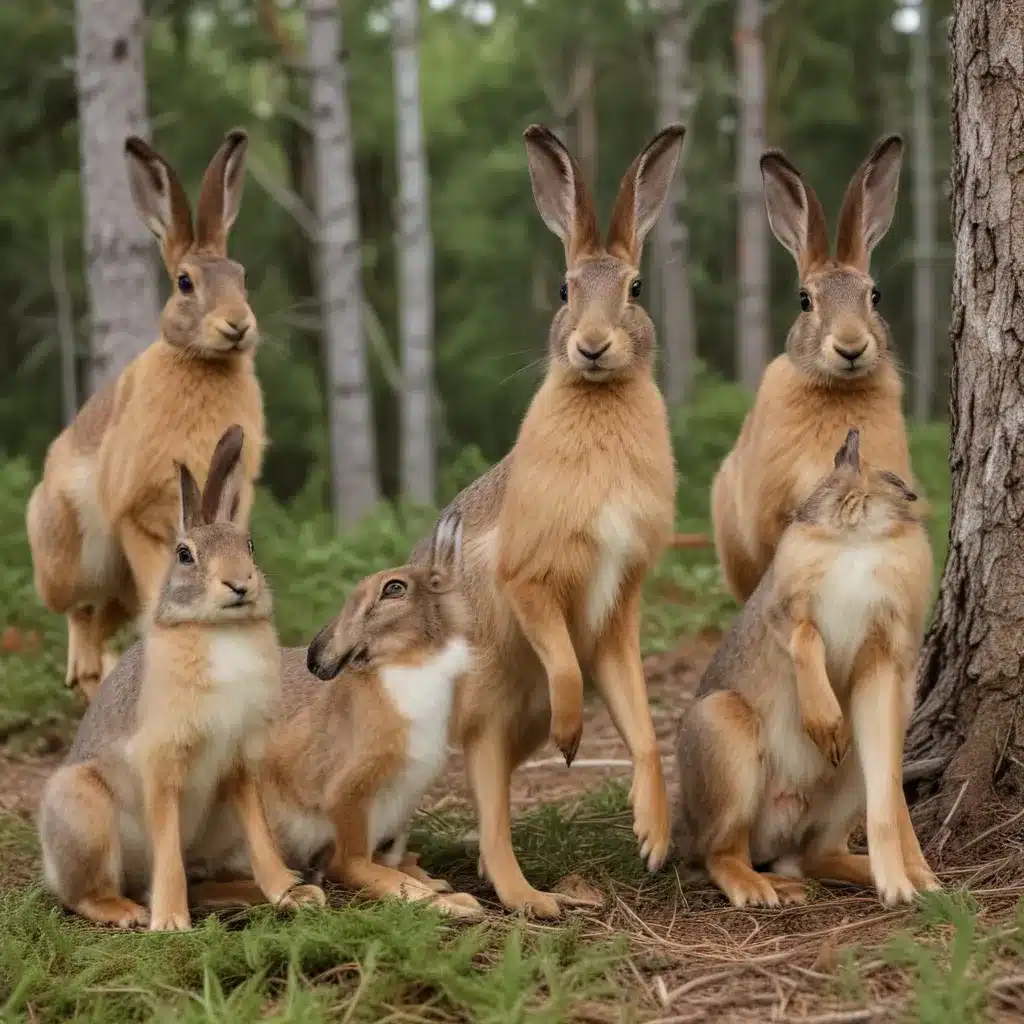
Crooked Pines Farm sits nestled in a beautiful pine forest, home to a delightful community of hopping hares. These charming creatures are a beloved part of our ecosystem, and we’re excited to introduce you to their fascinating world. Join us as we explore the habitat, behaviors, dietary preferences, and conservation efforts surrounding the hopping hares of Crooked Pines.
Habitat of the Hopping Hares
The pine forest of Crooked Pines is a dynamic, ever-changing environment that provides the perfect home for our hopping hare residents. Towering white pines, their branches laden with soft, green needles, create a lush canopy overhead. Beneath the pines, the forest floor is carpeted with a diverse array of plants, from cushiony mosses to vibrant wildflowers that bloom throughout the seasons.
This diverse habitat offers the hares abundant food resources, cover from predators, and the perfect terrain for their signature hopping movements. The sprawling understory of blueberry bushes, ferns, and fallen logs provides ideal nesting sites, while the open areas between the pines allow the hares to bound freely, keeping a watchful eye on their surroundings.
As the seasons change, so too does the landscape of Crooked Pines. In the spring, the forest awakens with the budding of new growth, and the hares emerge from their winter burrows to feast on the tender, nutrient-rich vegetation. Summer brings a vibrant display of wildflowers, attracting a host of pollinators that the hares observe with curiosity. Autumn transforms the pines into a kaleidoscope of golden and russet hues, and the hares busily gather cones and nuts to store for the winter ahead.
Behavioral Traits of the Hopping Hares
The hopping hares of Crooked Pines are a delight to observe, with their distinctive bounding movements and social interactions. These agile creatures are adept at navigating the uneven terrain, using their powerful hind legs to propel themselves effortlessly through the forest. Their large, rounded ears and alert posture allow them to detect the slightest movement or sound, helping them stay safe from potential threats.
Within the hare colonies, we’ve observed intricate social dynamics, with individuals forming close-knit groups and engaging in various behaviors. Younger hares often playfully chase one another, honing their agility and survival skills, while the more experienced members of the colony teach the youngsters the ways of the forest. Occasionally, we’ll witness the hares engaged in a territorial dispute, their powerful legs drumming the ground in a display of dominance.
The hares have also developed impressive adaptations to thrive in their pine forest habitat. Their thick, insulating fur keeps them warm during the colder winter months, and their wide, furry feet act as natural snowshoes, allowing them to bound effortlessly through the snow. The hares’ ability to blend seamlessly into the forest, thanks to their camouflaged coats, is a testament to their remarkable evolutionary adaptations.
Dietary Preferences of the Hopping Hares
The hopping hares of Crooked Pines are primarily herbivorous, relying on a diverse array of plant matter to sustain themselves throughout the year. During the growing season, they feast on a bountiful supply of grasses, wildflowers, and the tender shoots of shrubs and young trees. The hares’ keen sense of smell and eyesight help them identify the most nutritious and palatable vegetation.
As the seasons change, the hares’ dietary preferences shift to accommodate the available resources. In the fall, they eagerly gather and consume pine cones, nuts, and berries, storing these high-energy foods in their burrows for the leaner winter months. When the ground is blanketed in snow, the hares turn to the bark and twigs of shrubs and young trees, utilizing their sharp front teeth to strip the nutrient-rich outer layers.
The hares’ foraging strategies are not without their challenges, as they must compete with other herbivores, such as deer and squirrels, for access to the limited food resources. However, the hares’ adaptability and resourcefulness allow them to thrive, even in the face of these competitive pressures.
Conservation Efforts for the Hopping Hares
The hopping hares of Crooked Pines are an integral part of the delicate ecosystem, and their well-being is a top priority for our farm. Unfortunately, these charming creatures face a variety of threats, including habitat loss, predation, and the impact of invasive species.
To protect the hare population, we’ve implemented several conservation measures. Habitat restoration and the creation of wildlife corridors ensure that the hares have access to the resources they need to thrive, while also reducing the risk of fragmentation and isolation. We also work closely with local wildlife organizations to monitor the hare population and identify any emerging threats.
In addition to these on-the-ground efforts, Crooked Pines Farm actively engages the community in citizen science initiatives, encouraging visitors to observe and report their sightings of the hopping hares. This data helps us better understand the hares’ behavior and distribution, allowing us to fine-tune our conservation strategies.
Through our collective efforts, we strive to ensure that the hopping hares of Crooked Pines continue to thrive for generations to come. By fostering a deeper understanding and appreciation for these remarkable creatures, we hope to inspire others to join us in our mission to protect the diverse natural heritage of our farm.
So, the next time you visit Crooked Pines, keep an eye out for the telltale signs of our hopping hare residents – their distinctive tracks in the snow, the sound of their drumming feet, or the glimpse of their fluffy tails as they bound through the forest. And remember, you can play a vital role in the conservation of these beloved members of our farm community.


